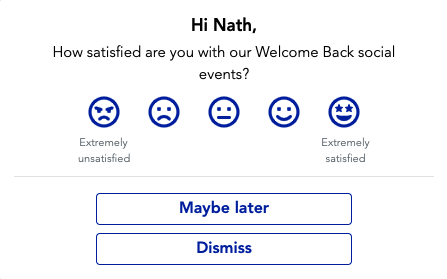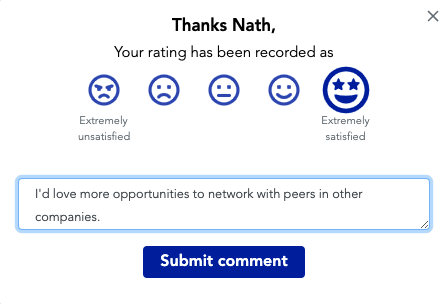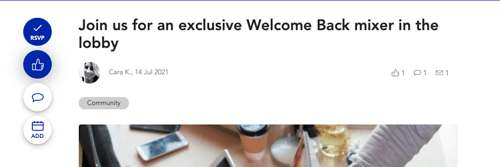Let's begin with a principle of digital marketing: A good website keeps visitors as long as possible. The longer a visitor stays, the more likely they are (generally) to become a customer.
You want to attract potential customers to your domain, show them around, intrigue them, and serve them with relevant landing pages and useful content tidbits. You want to stop them from leaving quickly (or 'bouncing'), and, ultimately, you want them to convert into customers.
Capturing tenant data seamlessly
Multi-stop user journeys are good predictors of conversion. But even when they don't generate new customer leads, such journeys give marketers contextual information about visitors. For example:
- Sarah searches 'Benefits of tenant experience' in Google and finds Equiem
- Sarah lands on the Equiem homepage, and then navigates to the 'About us' landing page
- Sarah then decides to download one of our recent free eBooks
- Finally, Sarah decides to book a demo with one of our Equiem team members
These four steps provide us critical knowledge about Sarah's behaviours prior to conversion (and it would even if she didn't complete step four). But if Sarah had landed on the homepage and immediately left, or, if she had just decided to fill out our demo booking form out of pure curiosity, we would not know nearly as much.
Apply the learning potential of the multi-stop journey to a bigger sample size: Now you know the habits and behaviours of thousands of individual users. Now you can identify trends, and make improvements — to your website, to your conversion channels, virtually anything.
Our workplace experience technology suite is designed to facilitate multi-touch user journeys. The visitors are your tenants, those working in and out of your commercial office buildings. Our design philosophy is based on connections: Every customer touchpoint is the chance to connect, and in so doing, learn something about how to better serve the customer. CRE owners who take this approach will shape the future of the workplace.
In one brief user session, you can capture at least five meaningful data points from your tenants. And, most importantly, you can do so organically, without disrupting their user experience. You get your data, and your users get their value too. These insights might help you to:
- Improve services and amenities
- Target hybrid-working tenants with exclusive, personalised goodies
- Validate capital expenditure decisions
- Implement new technologies
- Build tailored lease renewal strategies
Step 1: Nathan, arriving on the homepage of his community app, is greeted with our single-question feedback widget
Our custom NPS/Feedback widget appears non-invasively on the homepage of your tenant experience platform. You can use it to gather qualitative and quantitative feedback from users in a matter of seconds. For example, using this feature, you might run:
- A standard NPS survey (How likely is it that you would recommend this platform/service/company to a friend or colleague?)
- Number-rated single-question polls (On a scale of 1 to 5, how satisfied are you with our building facilities?)
- Sentiment-rated single-question polls with editable responses (Like the one shown below)

The beauty of the NPS/Feedback widget is that it automatically invites users to substantiate their ratings. Once Nathan has recorded his response (Extremely satisfied, of course), he can add additional comments.

Now you have two data points, and at scale, two possible trends to inform your decisions:
- X% of tenant users are Extremely satisfied/otherwise
- Judging by the type and prevalence of qualitative suggestions, here's why/why not; or, here's what people are saying
Step 2: Nathan heads to the event carousel on the homepage and clicks on an event of interest
Nathan is interested in the latest 'Welcome Back' mixer event happening in the lobby of his office building. So he clicks on the post to find out more.

There he finds all the crucial information he needs to make a decision about attending the event.
Already, in a single session, you've captured another useful data point: A content view, in this case, for an event post. Why is that useful? For just one example, if you had a disproportionate ratio of event post views to RSVPs — that is, if lots of people show interest in events but few people actual commit to attending — you might surmise that your event offerings are missing the mark with your tenant audience, or that you might need to dial up your calls-to-action.
Step 3: Nathan RSVPs to and 'likes' the post
Just like that, we have a single user session in which we've captured four connected data points: a Feedback widget response, a content view, an RSVP, and a 'like'. Together, these paint a picture of typical platform usage and user sentiments. Nathan is an engaged user because you've made it easy to engage. You've understood his intents and actions without imposing any friction on his experience. But we're not done yet.

Step 4: Nathan completes a single question poll, integrated seamlessly with the event post
With Equiem, you can embed all kinds of forms in your content posts. You can also leverage our custom Polls feature to gather even more information from your users. With the example of the 'Welcome Back' mixer event, the poll is easy to see and quick to answer — it's a part of the content, and does not require leaving the platform. Even better, it is accompanied organically by an incentive: In this case, a fantastic community-building event.

Polls are a great way to generate insights with minimal disruption to the experience of your users. People don't like big surveys, so why not make them as small as possible, issue them more frequently, and ensure a steady stream of contextualised insights?
One user session, six data points: Scalable data to prepare you for the uncertain future of the workplace
A Feedback widget response (with comment attached), a content view, an RSVP, a 'like', and a response to an embedded poll. All within one session, and all seamlessly integrated with the normal functions of your community platform.
This is the future of CRE: Custom experiences, tailored to the wants of the individual. As we've said before, a community is the sum of small, personalised engagements. Personalisation is soul of customer service, and personalisation produces the best results. Contextualised data points get you there, and the Equiem platform design will get you there fast.



